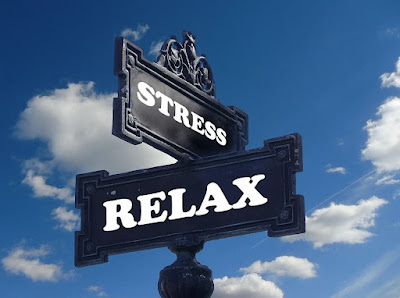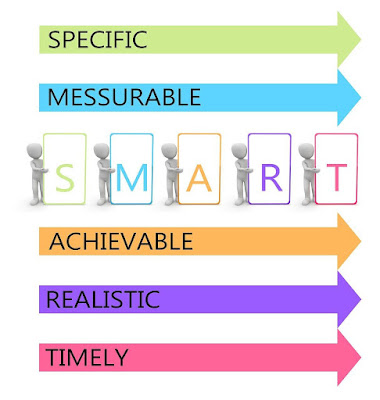Quality sleep is fundamental to our overall health and well-being. It affects everything from our immune system and mental clarity to our emotional stability and long-term disease risk. Yet, many people struggle to get the rest they need. In a world filled with constant stimulation and irregular schedules, developing a consistent nighttime routine can be a game-changer. By creating intentional habits that ease the transition from wakefulness to sleep, you can dramatically improve the quality and depth of your rest.
This blog post will explore the critical role nighttime routines play in supporting better sleep. We’ll dive into the science behind why routines are so effective, discuss the specific benefits of having a calming evening ritual, and offer practical tips to help you build a routine that works for your lifestyle.
Why a Nighttime Routine Matters
Our bodies operate on a natural 24-hour cycle known as the circadian rhythm. This internal clock regulates vital functions like sleep, hormone production, and body temperature. When we stick to regular habits, we help synchronize our circadian rhythm, making it easier to fall asleep and wake up at consistent times. A predictable nighttime routine provides strong cues to our brain that it’s time to wind down, naturally preparing us for rest without the struggle of tossing and turning.
A calming evening ritual offers a range of important benefits. It can significantly speed up the time it takes to fall asleep, as the mind and body gradually shift into a relaxed state. It also promotes deeper, more restorative sleep, allowing the body to repair itself and the mind to consolidate memories more effectively. Over time, better sleep quality can lead to improved mood, enhanced cognitive performance, and greater productivity during the day. In short, a thoughtful nighttime routine not only supports better sleep but also creates a ripple effect of positive changes across all areas of life.
Key Elements of an Effective Nighttime Routine
One of the most important foundations of a successful nighttime routine is setting a consistent sleep and wake time. Going to bed and waking up at the same hours each day, even on weekends, helps regulate your body’s internal clock. When your sleep schedule is predictable, your body naturally begins to feel sleepy at the right time and more alert in the morning, making it easier to fall asleep quickly and wake up refreshed.
It’s also essential to start unwinding about an hour before you intend to sleep. This transition period helps signal to your brain that it’s time to relax. Activities like reading a book, doing gentle stretching, journaling your thoughts, or practicing meditation can help ease mental chatter and physical tension. Choosing calm, screen-free activities allows your mind to shift out of the high-energy mode that dominates most of our busy days.
Limiting screen time is crucial during the hour leading up to sleep. Phones, tablets, and computers emit blue light, which can suppress the production of melatonin—the hormone responsible for making you feel sleepy. Instead of scrolling through your phone or watching TV, consider alternative activities such as listening to soothing music, writing in a journal, or doing a mindfulness exercise. These activities promote relaxation without disrupting your natural sleep hormones.
Creating a sleep-friendly environment can also make a significant difference. Your bedroom should be a sanctuary designed for rest. Aim for a cool temperature, ideally between 60 and 67 degrees Fahrenheit (about 15–19 degrees Celsius), which helps facilitate deeper sleep. Blackout curtains can block external light, while white noise machines or calming nature sounds can mask disruptive noises. Investing in comfortable bedding—like a supportive mattress and breathable sheets—can further enhance your sleep quality.
Finally, incorporating calming rituals into your nighttime routine can create strong mental associations with relaxation and sleep. Drinking a cup of caffeine-free herbal tea, using aromatherapy with soothing scents like lavender, practicing deep breathing exercises, or keeping a gratitude journal are all simple yet effective ways to unwind. These small practices can become powerful signals to your body and mind that it’s time to rest.
Common Mistakes to Avoid
While building a nighttime routine can greatly improve your sleep, certain habits can undermine your efforts. One common mistake is eating heavy meals too close to bedtime. Digesting a large or rich meal can make it difficult for your body to fully relax and may cause discomfort that interrupts sleep.
Another mistake is engaging in stimulating activities during the evening hours. Intense exercise, late-night work sessions, or anything that heightens adrenaline and mental alertness can delay your ability to wind down. It’s best to reserve high-energy activities for earlier in the day and keep your evenings as calm as possible.
Finally, consuming caffeine or alcohol late in the day can negatively impact your sleep. Caffeine, even consumed several hours before bedtime, can stay in your system long enough to interfere with falling asleep. Although alcohol might initially make you feel drowsy, it tends to disrupt sleep cycles later in the night, leading to more fragmented and less restorative rest. Being mindful of what you consume in the hours leading up to bed can make a big difference in how well you sleep.
Sample Nighttime Routine
Establishing a nighttime routine doesn’t have to be overwhelming. In fact, the simpler it is, the more likely you are to stick with it. Here’s an easy example of a step-by-step nighttime routine that you can customize to fit your needs:
Start by dimming the lights about an hour before bed to help your body recognize that it’s time to wind down. Put away your phone, laptop, and other screens, and switch to calming activities. Spend a few minutes doing light stretching or a few yoga poses to release the physical tension accumulated during the day. Next, brew a cup of herbal tea, like chamomile, and settle down with a good book or a journal. Reflecting on your day or jotting down a few thoughts can clear your mind before bed.
As you get closer to bedtime, engage in a calming breathing exercise or short meditation session to quiet your thoughts even further. Finally, ensure your bedroom is set up for optimal sleep: cool temperature, blackout curtains drawn, and perhaps a soft background noise if it helps you relax. By around the same time each night, aim to be in bed, ready for restful sleep.
This is just a starting point—feel free to tweak the timing or activities to create a routine that feels comforting and natural for you.
Tips for Sticking to Your Routine
Building a nighttime routine into your life takes a little patience, but a few key strategies can make the process much smoother. The first is to start small. Rather than trying to overhaul your entire evening all at once, add just one new habit at a time. This might mean setting a consistent bedtime first or committing to a few minutes of reading before sleep. Small changes are easier to maintain and can build momentum over time.
It’s also important to stay flexible while aiming for consistency. Life will occasionally get in the way—whether it’s late nights out, unexpected work demands, or travel. When this happens, don’t view it as a failure. Instead, return to your routine the next evening without guilt. A flexible mindset allows you to maintain the overall rhythm without becoming discouraged.
Finally, track your progress and be willing to adjust. Whether you use a simple notebook, an app, or a printable checklist, noting your habits can reveal patterns in your sleep quality and help you tweak your routine for even better results. Over time, these adjustments will help you create a nighttime ritual that is both sustainable and highly effective.
A consistent and calming nighttime routine is one of the most powerful tools you have for improving sleep quality and enhancing overall well-being. By creating intentional habits that prepare your body and mind for rest, you can fall asleep more easily, experience deeper and more restorative sleep, and wake up feeling more energized and focused.
The best part? You don’t need to make drastic changes overnight. Start small, stay flexible, and watch how even modest shifts in your evening habits can transform your nights—and your days. There’s no better time to begin than tonight. Choose one calming ritual, commit to it, and take the first step toward a better, healthier sleep routine.
Download our free Nighttime Routine Checklist to get started! It’s a simple, printable guide to help you build a routine that works for your lifestyle.
thank You For Your Time & Consideration😊…
@ Puja Singh 😊😊😊…
































































